
Have you been needing a smoke effect for cosplay, but compact fog machines were too expensive? Look no further, and learn to make your own for ~$50. It can even be remote controlled!
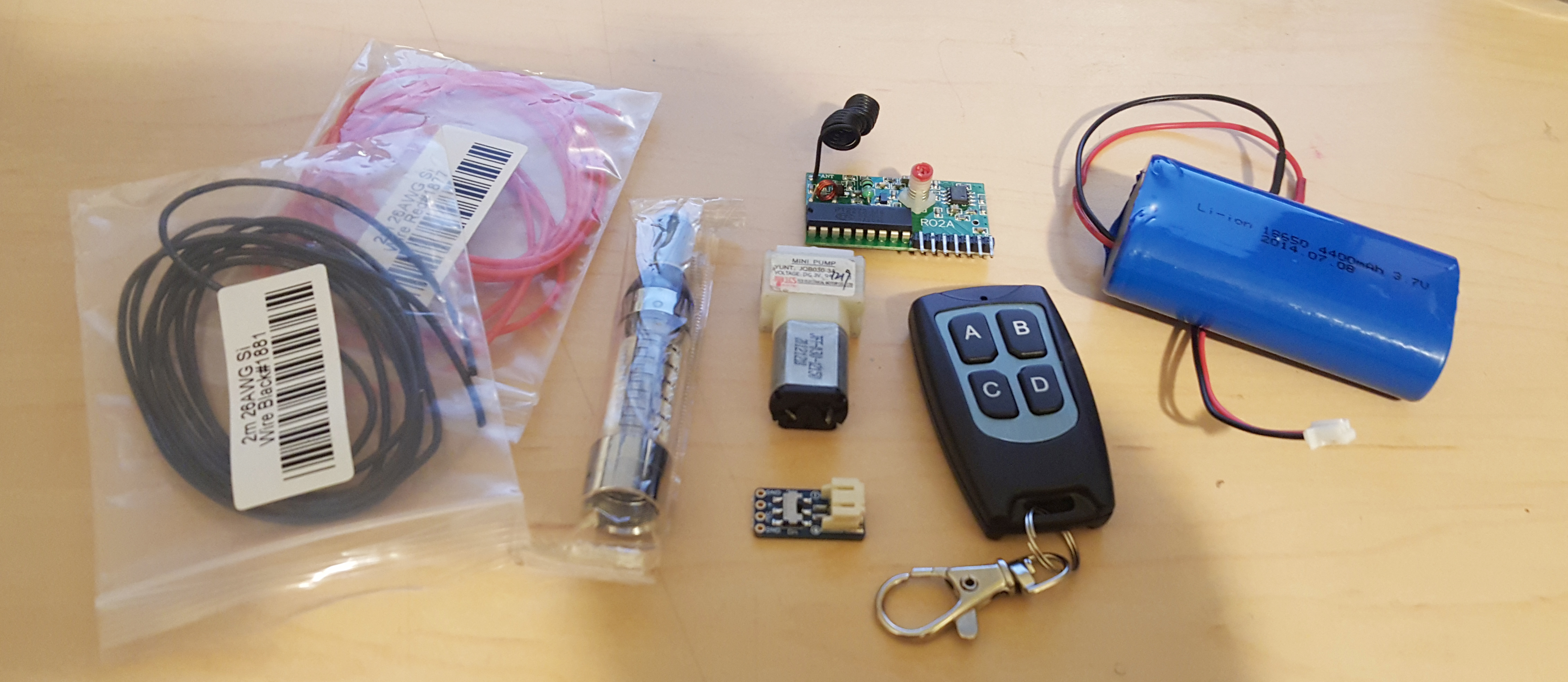
Simple Fog Machine:
For Wireless you’ll also need:
- A T4 RF Reciever (toggles on/off) OR a M4 RF Reciever (hold down for on)
- An N-channel power MOSFET (30V / 60A)
Optional Supplies:
- (Optional) Heatshrink tubing & Electrical Tape
- (Optional) Helping Hands
When the circuit is switched on, the li-ion cell supplies about 3.7V to the cartomizer and pump in parallel. The current heats an element in the cartomizer that vaporizes the fog juice, and turns the pump motor to pump out the vapors.
Battery selection: My cartomizer has a resistance of about 2 ohms. By Ohm’s Law, voltage = current times resistance (V=IR), so current equals voltage divided by resistance (I=V/R), so the current through the cartomizer will be about 4V/2 ohms = 2A. So the battery must supply about 2A of current. The amount of current you can supply from a li-ion battery depends upon its capacity (mAh) and its “C” rating. The Adafruit li-ion batteries have a power capability of about 1C, so you should choose a battery of about 2000 mAh (2Ah) to source 2A of current during the operation of the fog machine. Smaller capacity cells may not work, or use may damage the battery over time.
This is like the wired version, but I use a T4 RF receiver to control a MOSFET transistor switch to electronically switch on/off the current through the cartomizer and the pump motor. (Note the JST battery switch is still useful to power off the whole circuit when not in use so you aren’t spending battery power to power the idle T4 RF receiver.)
The T4 receiver requires three connections, power, ground, and output. As the remote control fob button is activated, the T4 receiver’s corresponding output signal will switch between a 0 (0V) or a 1 (+V), but the T4 output cannot supply the necessary 2A of current to the cartomizer. Therefore you need a MOSFET (metal oxide semiconductor field effect transistor) to operate as a silicon switch to open or close the cartomizer and pump subcircuit.
The MOSFET has three pins. Drain = +V, Source = 0V (ground), and Gate. See the leads labelled D, S, G in the datasheet. The gate input is connected to a T4 output pin. When the T4 output signal is a 0, the gate sees 0, and the MOSFET disconnects the source and drain. When the T4 output signal is a 1, the gate is 1, and the MOSFET conducts between the source and drain (as if you closed a switch). This allows current to flow from the battery, through the cartomizer and pump motor, through the MOSFET, to ground.
Note: not any MOSFET transistor will do. You need to use one with a low Vgs (gate-source threshold voltage) so that the ~3.7V output voltage of the T4 is enough to fully turn on the transistor. The Adafruit one linked above worked well for me.

These are some of the photos I took along the way. They don’t capture everything, but hopefully they should help explain the process.
This is the Kanger T2 Cartomizer. It’s the main body of an e-Cig. Normally they’re screwed into a battery and use our breath to suck out vapour, but we can’t do either of those so we have to modify ours. The first thing I did was enlarge one of the two small holes on the side so I could run a wire through it. This wire will be positive (+3.7V) and will get soldered onto the raised post sticking out from the bottom.
It’s REALLY important that you not get solder in the hole at the center because that’s the hole that provides airflow through the Cartomizer and allows the smoke to get pushed out. The negative lead (ground) will get soldered to the outside edge of the screw in section. After you’ve done this, it’s a great idea to securely wrap all of this with electrical tape for protection and strain relief.
At this point if you just wanted a simple fog machine, you could solder both of the positive power wires and both of the ground wires to their respective terminals on the switch which connects to your battery.
The next couple steps are going to be used for the more complex remote controlled fog machine.
This is the T4 Radio Frequency (RF) Reciever. It allows me to control whether or not smoke is being produced with the touch of a button while the actual smoke machine is hidden in armor. Power and ground (the two right-most pins) get soldered to the power and ground terminals on the switched JST board. Pins D0-D3 correspond to the different buttons on your remote key fob (D3 is A, D2 is B, etc). Pick one that you like, and solder a wire from it to the left pin of the Mosfet (Pin G).

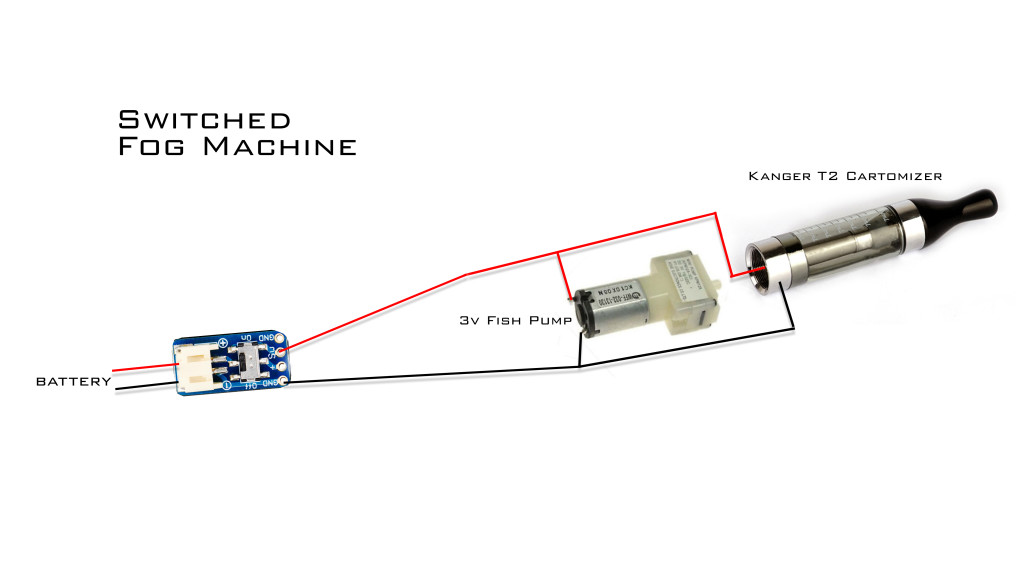
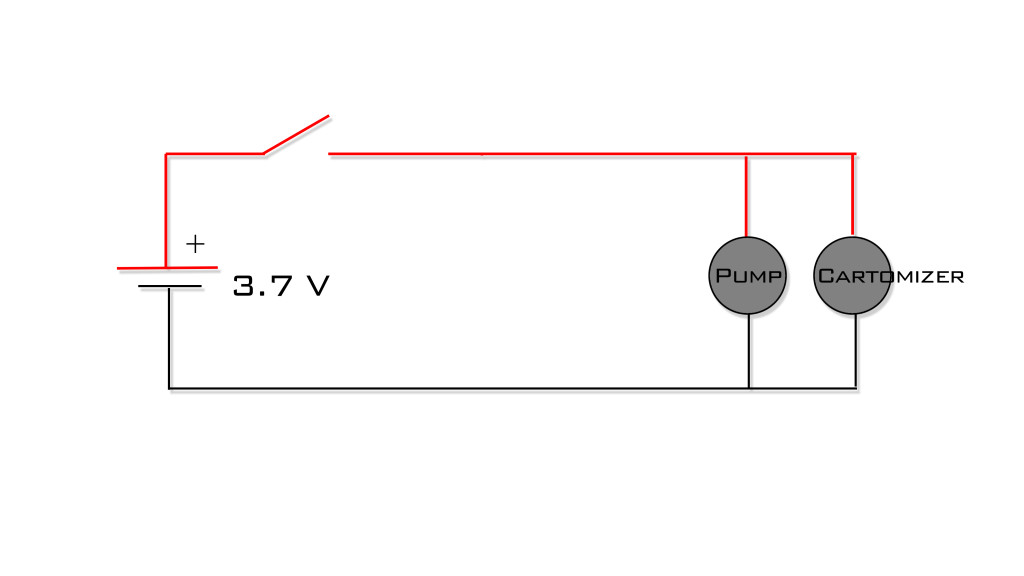
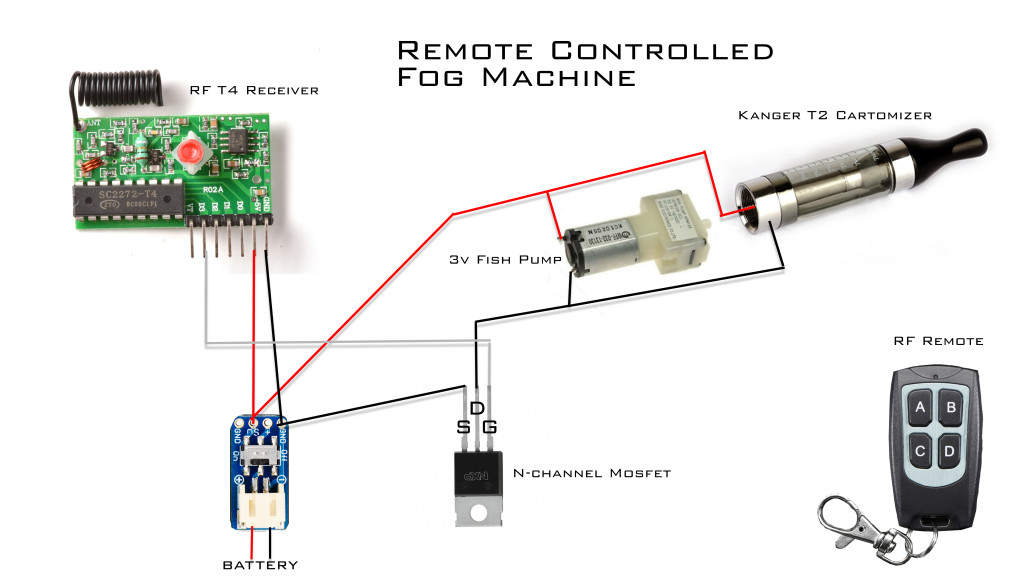


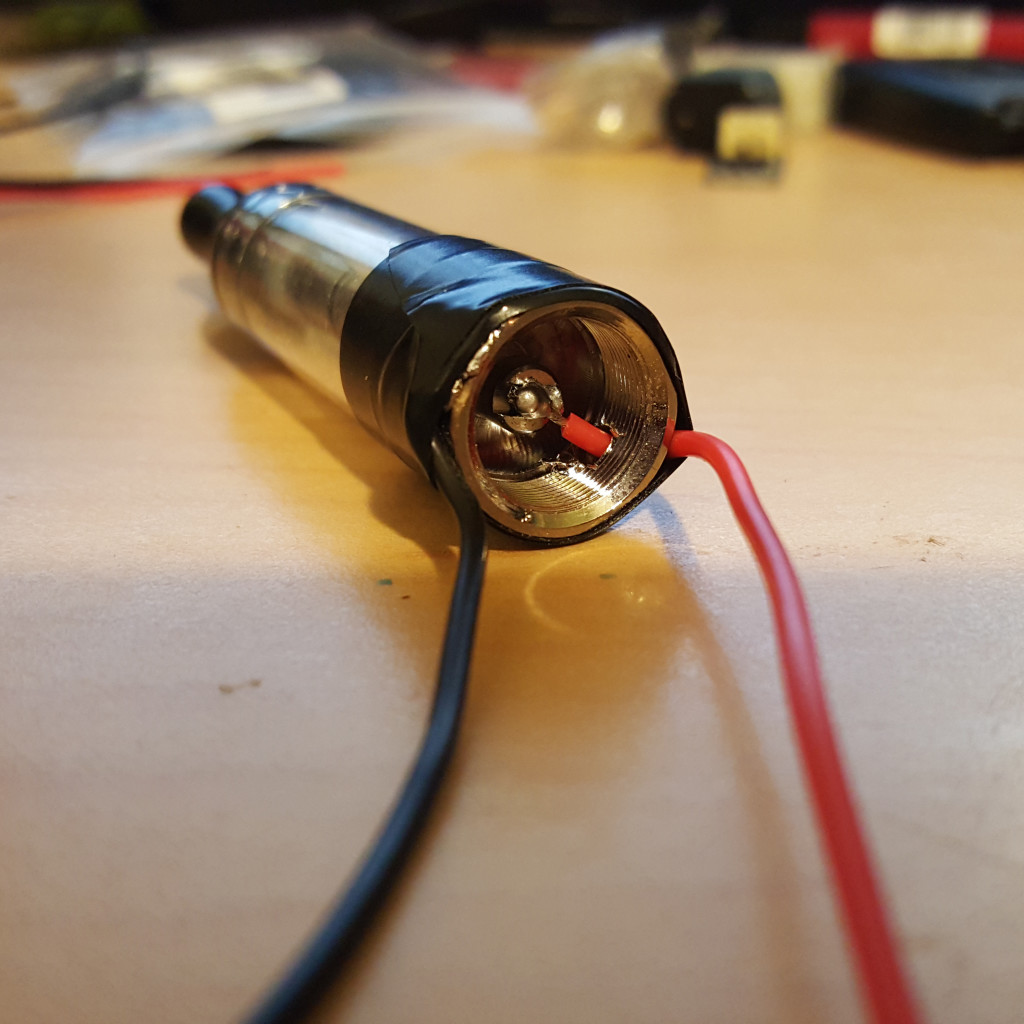








Leave a Comment